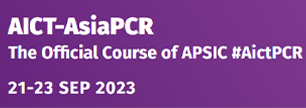


 Article Link
Article Link

Permanent pacemaker use among patients with heart failure and preserved ejection fraction: Findings from the Acute Decompensated Heart Failure National Registry (ADHERE) National Registry
Khazanie P, Hellkamp AS, Hernandez AF et al.
KEYWORDS
HFpEF; permanent pacemaker; incidence; patient characteristics
BACKGROUND - Heart failure with preserved ejection fraction may be associated with chronotropic incompetence, but little is known about the incidence and prevalence of permanent pacemaker use in this population or factors associated with its use.
METHODS - We analyzed patients with heart failure with preserved ejection fraction (ie, left ventricular ejection fraction greater than 40%) from the ADHERE registry (2001-2006) linked with Medicare claims. We described the use of both prevalent and incident permanent pacemakers in heart failure with preserved ejection fraction and determined factors associated with pacemaker use with logistic regression models.
RESULTS - Among 13,881 patients with heart failure with preserved ejection fraction, 3136 (22.6%) had a permanent pacemaker, and of these patients, 636 had a permanent pacemaker implanted during hospitalization. Permanent pacemaker use was more common among older patients (81 vs 79 years; P < .001), men (38% vs 34%; P < .001), patients with atrial fibrillation (58% vs 36%; P < .001), and patients with wider QRS duration (140 ms vs 94 ms; P < .001). Rates of digoxin, aldosterone antagonist, and loop diuretic use were slightly higher in patients with a permanent pacemaker compared with patients with no permanent pacemaker. Factors associated with both prevalent and incident pacemaker use included age, fast or slow heart rate, atrial fibrillation, and lower body mass index.
CONCLUSIONS - Use of permanent pacemakers is relatively common among patients with heart failure with preserved ejection fraction.
Copyright © 2018. Published by Elsevier Inc.




















